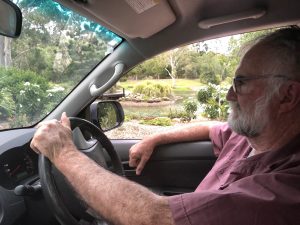 Trucker’s arm may be a thing of the past with new Australian research showing no excess of skin lesions on the right side of the body as might be expected with driving-related sun exposure.
Trucker’s arm may be a thing of the past with new Australian research showing no excess of skin lesions on the right side of the body as might be expected with driving-related sun exposure.
The retrospective study comprised 1,000 premalignant and malignant skins lesions from consecutive histopathology records at a dermatology practice in regional Victoria.
The lesions including melanoma, BCC, SCC, solar keratosis and Bowen disease were from men and women with a mean age in their early 70s.
After excluding 23 midline lesions, the researchers found no significant difference between the distribution of the remaining lesions (n=481 left side; n=496 right side; p=0.63).
There was also no significant difference in the laterality of the lesions based on gender, histopathological diagnosis, age or site of the lesion on the body.
The findings are inconsistent with Australian research from about three decades ago which basically found a right-sided predominance of lesions in men and a left-sided predominance in women.
And international literature is variable with a left-sided predominance even in countries with right-hand drive vehicles.
“Driving-related ultraviolet exposure appears to no longer be a major factor in the distribution of melanoma and non-melanoma skin cancer. This may be due to the increasing use of air conditioning in vehicles, or to attribution error in previous research,” the Australian study said.
“It is possible that a larger study, including clinical components such as field UV damage and skin type and detailed demographic data such as occupation and patterns of sun exposure, may be able to further characterise any small difference in laterality of these skin lesions.”
The research was published in a letter to the editor of the Australasian Journal of Dermatology.